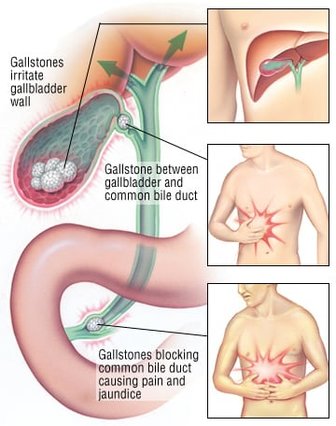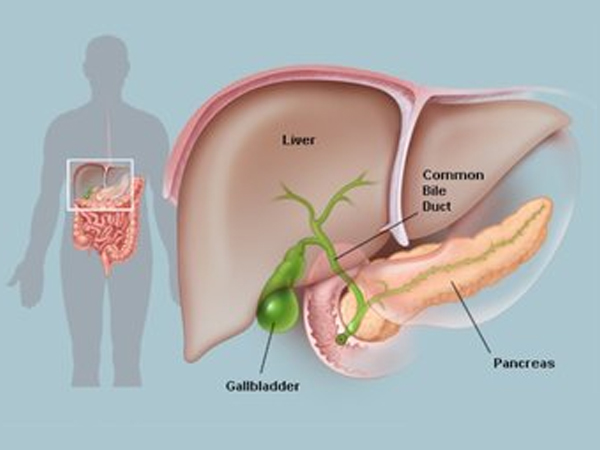Gallstones & Gall Bladder
About 20% of the population have or will develop gall stones. Not all gall stones will cause problems. But complications from gall stones include:
- Pain (biliary colic)
- Infection (cholecystitis)
- Infection of the bile ducts (cholangitis)
- Inflammation of the pancreas (pancreatitis)
- Blockage of the stomach or bowel by a gall stone (gall stone ileus)
Pain from gall stones is usually experienced in the upper part of the abdomen, sometimes more so on the right side. Frequently it is precipitated by consumption of fatty foods, but can be brought on by any type of foods. The pain may also be felt going around to your back. The pain gradually increases over time and can last for several minutes to hours. Nausea and abdominal bloating is also frequently noted. There may be a change in the colour of your urine (becomes darker) or your stools (becomes lighter). A fever may accompany the pain.
If your gall bladder become infected (acute cholecystitis) it is managed with antibiotics and removal of the gall bladder by surgery (cholecystectomy). The stones in the gall bladder are removed with the gall bladder. Gall stones are not removed on their own.
Gall stone and gall bladder surgery is commonly performed as a "keyhole" procedure (laparoscopic cholecystectomy). In rare occasions, it is performed as an "open" procedure (the traditional way), which involves an incision just below the ribs on the right side.
Most people go home the day after surgery. There are restrictions on certain physical activities and heavy lifting. There is no dietary restrictions, but recommend avoiding fatty foods if you develop loose bowel motions after gall bladder surgery. Approximately 2% of people will develop permanent intolerance to fatty or oily foods after removal of their gall bladder. This is usually managed by avoiding trigger foods or the use of bulking laxatives.



